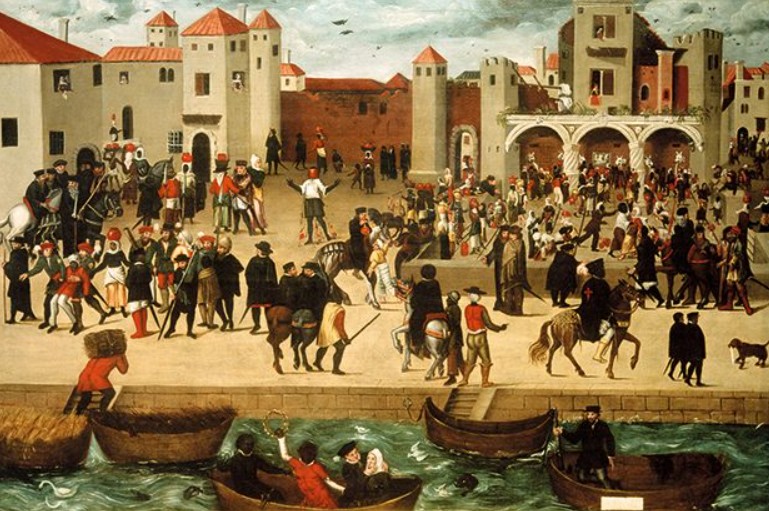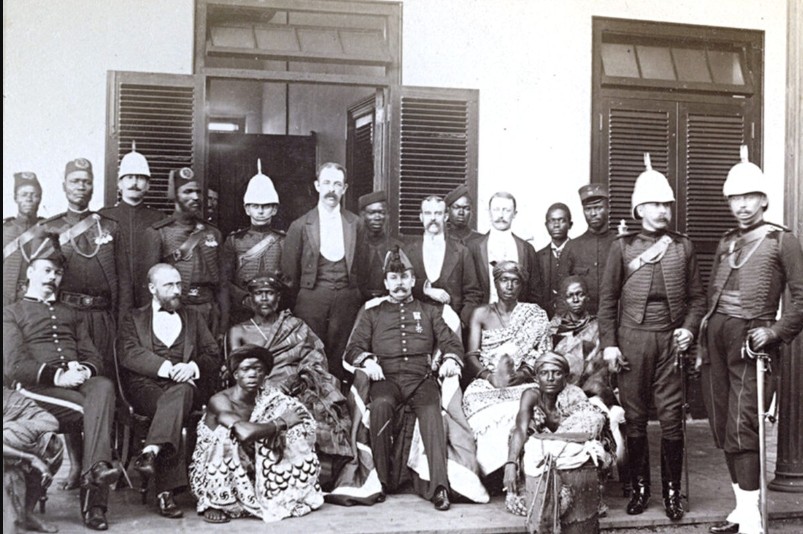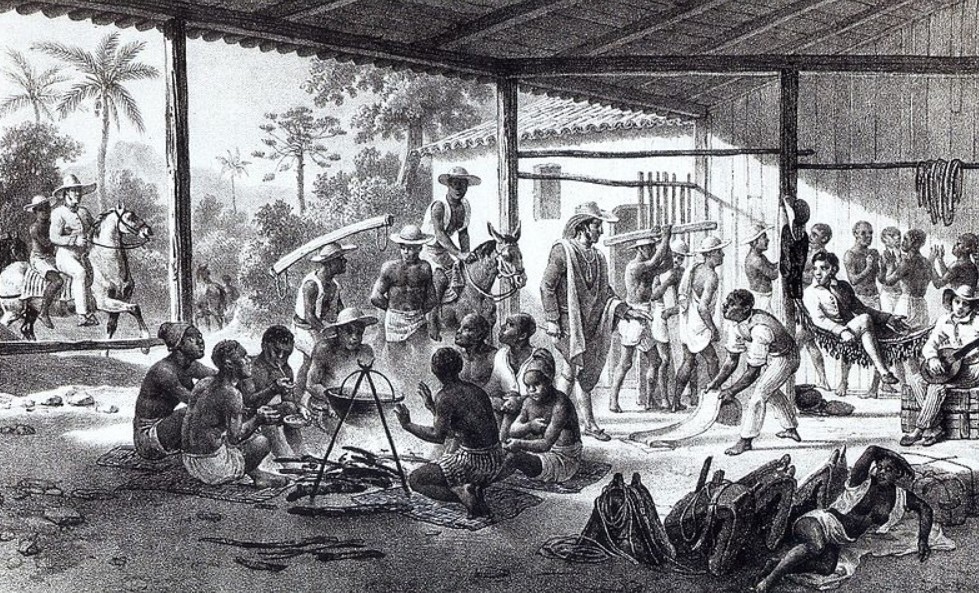The question When Did the Slave Trade Start? Leads us into one of the darkest chapters of human history—a period defined by exploitation, human suffering, and profound cultural transformation. At uknewsblog.co.uk, we examine the inception, evolution, and enduring legacy of the slave trade, providing our UK audience with clarity and comprehensive detail.
This post examines not only the historical timeline but also the economic, social, and political catalysts that propelled this grim phenomenon and how its impact continues to shape modern society.
When Did the Slave Trade Start? Tracing the Origins
While the institution of slavery dates back to ancient times, the establishment of the transatlantic slave trade in the early 15th century marked a transformative period in human history. This era marked the beginning of large-scale, systematic human trafficking and set in motion events that would leave an indelible mark on the world.
Early Historical Foundations:
Ancient Beginnings:
-
- Civilisations Involved:
- Early societies, including Ancient Egypt, Greece, and Rome, practised slavery primarily as a means to support their economies and military campaigns.
- Core Functions:
- Enslaved individuals were used for labour, domestic service, and as captives during warfare.
- Cultural Integration:
- The institution of slavery was often intertwined with social hierarchies and cultural practices.
- Civilisations Involved:
Medieval Developments:

-
- Evolution of Practice:
- As kingdoms and empires expanded, the trade in human beings became more structured and commercially motivated.
- Emergence of Trade Networks:
- Increased interactions between different regions led to more organised systems of servitude, setting the stage for later global developments.
- Evolution of Practice:
The Transatlantic Transformation:
-
- 15th Century Onset:
- The era of European exploration opened new maritime routes that enabled the large-scale transportation of enslaved Africans.
- Organised System:
- With the establishment of dedicated trading posts, legal frameworks, and economic incentives, the slave trade evolved into a highly systematic industry.
- Expanding Reach:
- This shift was not merely a change in scale but also a change like slavery, transforming it into an international business with lasting global consequences.
- 15th Century Onset:
What Fueled the Transatlantic Slave Trade? Uncovering the Catalysts
Why Did Economic, Political, and Technological Forces Drive This Dark Chapter?
The emergence of the transatlantic slave trade was not an isolated event but rather the result of several converging factors that reshaped entire economies and societies.
Economic Motivations:
Labour Demand and Agricultural Expansion:
-
- European colonies required a vast, cheap workforce to cultivate cash crops such as sugar, tobacco, and cotton.
- The success of plantation economies hinged on the relentless exploitation of enslaved labour.
Profit and Financial Incentives:
-
- The enormous profits generated by the trade incentivised investors and merchants.
- The commodification of human life became a cornerstone of colonial economic systems.
Market Expansion:
-
- Increased global demand for raw materials helped institutionalise the slave trade as a critical component of international commerce.
Political and Imperial Ambitions:
Colonial Expansion:

-
- European powers were driven by the desire to establish and control vast overseas territories.
- Slave labour was instrumental in building and sustaining these colonial empires.
National Prestige and Power:
-
- The ability to dominate and profit from human trafficking was often seen as a measure of a nation’s strength and modernity.
Legal and Institutional Frameworks:
-
- Governments enacted laws and treaties that legitimised and regulated the slave trade, ensuring its continuity for centuries.
Technological Innovations:
Advancements in Navigation and Shipbuilding:
-
- Innovations in maritime technology made long-distance voyages more reliable and efficient.
- Larger, sturdier ships allowed for the mass transportation of enslaved individuals.
Infrastructure and Trade Routes:
-
- The development of ports and trading posts across the Atlantic enabled the seamless flow of goods and people.
- These advancements underpinned the expansion and operational efficiency of the slave trade.
Expanded Economic Impact – Key Bullet Points:
Wealth Generation:
-
- Massive capital accumulation in European states fueled further industrial and infrastructural development.
Industrial Revolution:
-
- The profits from the slave trade contributed indirectly to the financial backing of early industrial innovations.
Social Stratification:
-
- The economic disparities created by the trade have echoed through generations, influencing modern wealth gaps and social structures.
How Did the Slave Trade Evolve? A Chronological Overview
Understanding When Did the Slave Trade Start? Requires a look at its progression over time. The following table outlines the key milestones in the evolution of the slave trade, from its ancient origins to its eventual decline.
| Period/Year | Key Event | Impact and Significance |
| Pre-15th Century | Early instances of slavery in ancient civilisations | Slavery was a social and economic institution in early societies. |
| Early 15th Century | Onset of the transatlantic slave trade | Initiation of large-scale, systematic human trafficking linked to European exploration. |
| 16th Century | Expansion by European colonial powers | Surge in the number of enslaved individuals transported to the Americas, fuelling economic growth. |
| 18th Century | The height of the transatlantic slave trade | Peak period with significant cultural, economic, and social ramifications worldwide. |
| 19th Century | Rise of abolition movements and gradual legal reforms | The beginning of the end for the legal practice of the slave trade, spurred by humanitarian efforts. |
What Are the Lasting Impacts of the Slave Trade? Exploring Its Enduring Legacy
How Has History Shaped Modern Society Through This Dark Legacy?

The slave trade’s impact is not confined to history books—it continues to influence cultural identities, economic disparities, and political debates across the globe.
Detailed Socio-Cultural Impacts:
Cultural Transformation:
-
- Diaspora and Identity:
- The forced migration of millions of Africans led to the creation of diverse diasporic communities.
- Blending of cultures has given rise to unique traditions, languages, and art forms, albeit through a painful process of cultural loss.
- Heritage and Memory:
- The suppression of indigenous customs and the imposition of new cultural norms have left lasting marks on the identity of entire communities.
- Diaspora and Identity:
Social Inequalities:
-
- Racial Hierarchies:
- The legacy of racial discrimination and social stratification established during the slave trade persists in modern societies.
- Intergenerational Impact:
- The historical exploitation has contributed to enduring inequalities in education, income, and social mobility.
- Racial Hierarchies:
Economic and Political Legacies:
Economic Disparities:
-
- Wealth Accumulation:
- The enormous profits reaped from the slave trade enriched European nations and laid the groundwork for modern capitalist economies.
- Structural Inequality:
- The exploitation of labour and resources during this period has contributed to persistent economic imbalances.
- Wealth Accumulation:
Political and Legal Reforms:
-
- Abolition and Human Rights:
- The struggle to end the slave trade catalysed early human rights movements, paving the way for modern legal protections.
- Policy Debates:
- Discussions about reparations, social justice, and historical accountability continue to be influenced by the legacy of slavery.
- Abolition and Human Rights:
Expanded Points on Legacy:
Cultural Diversity and Loss:
-
- Forced migration led to vibrant cultural fusion, yet many traditional practices were irretrievably lost.
Economic Foundations:
-
- The accumulation of wealth during the slave trade has had a lasting influence on global economic power structures.
Political Reforms:
-
- The drive for abolition laid the groundwork for subsequent civil rights and human rights movements.
Social Injustice:
-
- Racial and socio-economic disparities today are deeply rooted in the historical exploitation of enslaved peoples.
Which Aspects of This Dark History Still Spark Controversy?

While we have addressed When Did the Slave Trade Start? Several questions persist that keep this subject both relevant and contentious:
- How Should We Commemorate This Past?
- What are the best practices for memorialising the suffering and resilience of those affected by the slave trade?
- Can Lessons from History Prevent Future Injustices?
- How can education and policy be used to avert modern forms of exploitation and ensure social justice?
- What Are the Parallels with Modern Trafficking?
- In what ways do contemporary issues of human trafficking mirror historical practices, and what can we learn from these comparisons?
Sustaining the Conversation
- Educational Initiatives:
- Museums, memorial projects, and updated school curricula help keep historical memory alive.
- Policy and Reparations:
- Ongoing debates in the UK and worldwide focus on addressing the long-term impacts through reparative measures.
- Global Perspectives:
- Comparative studies between the historical slave trade and modern human trafficking offer critical insights into preventing future abuses.
Conclusion: Learning from a Painful Past
Exploring When Did the Slave Trade Start? Takes us deep into the origins of systematic human trafficking and reveals a legacy of exploitation that continues to shape our world. By examining its beginnings, driving forces, and far-reaching consequences, we not only honour the memory of those who suffered but also gain critical insights into addressing present-day inequalities. Understanding this dark chapter is essential for forging a future built on justice, remembrance, and equity.
For more in-depth historical analysis and current perspectives on related issues, visit uknewsblog.co.uk and join us in our ongoing journey to uncover and learn from our collective past.
FAQs
When Did the Slave Trade Start?
It began in the early 15th century with the rise of the transatlantic slave trade.
What drives its expansion?
Economic demand, colonial ambitions, and technological innovations.
How does its legacy affect modern society?
It underpins cultural, economic, and social inequalities that continue today.






